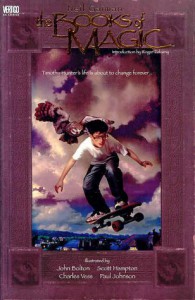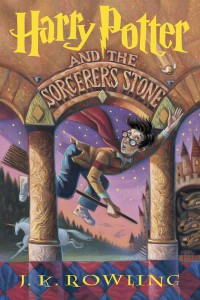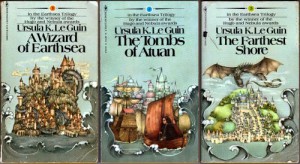Webs and strands of creative influence
The connective tissue between “inspiration” and “originality” is right there, and I understand Bakshi’s complaint more clearly. Is it any surprise really that Howe and other wonderful artists working on Jackson’s production were inspired by Bakshi? This is how representational art become so indelible that is seeps into the “creative ether,” to be tapped and to resurface in the works of those who follow.
Of course our beloved Professor Tolkien did not work in a vacuum either. His literary influences are numerous and well-documented. Scholar and friend to TheOneRing.net Douglas A. Anderson tells us in his wonderful edition “The Annotated Hobbit” that:
Tolkien himself claimed that ‘The Hobbit’ was derived from ‘previously digested’ epic, mythology, and fairy story. We can name such sources: BEOWULF, the fairy-tale collections of Andrew Lang and the Brothers Grimm, works by E.H. Knatchbull-Hugessen, Rudyard Kipling, William Morris, and George Macdonald, especially the latter’s ‘Princess and the Goblin’ and its sequel ‘The Princess and Curdie.’
 Then there was “The Marvellous Land of Snergs,” (1927) by E.A. Wyke-Smith. A fun children’s story about a diminutive race of Snergs (stand-in for Hobbits) and one in particular named Gorbo. Umm, shades of Bilbo.
Then there was “The Marvellous Land of Snergs,” (1927) by E.A. Wyke-Smith. A fun children’s story about a diminutive race of Snergs (stand-in for Hobbits) and one in particular named Gorbo. Umm, shades of Bilbo.
Genre fiction as a “stew”
Terry Pratchett (the “Discworld” series) once described genre fiction as “A stew … You take stuff out of the pot. You put stuff back in. The stew bubbles on.” When I interviewed him for our documentary he also wisely recognized the “Mount Fuji” analogue to Tolkien; saying that writers of fantasy always have Tolkien somewhere in the back of their minds (and their creations) just as Mount Fuji is so ubiquitous in every damn Japanese watercolor print you’ll ever see. Pratchett explains: “In those prints where you don’t see Mount Fuji in the background it is because the artist is actually standing on Mount Fuji.”
Note Tolkien’s influence over Terry Brooks (the “Shannara” series), George R.R. Martin (“A Game of Thrones”) and certainly J.K. Rowling (I won’t even credit her book, you all know it). The character Bathilda Bagshot appears as a sly reference to Tolkien but the concept of a horcrux also stands out to many. After all, the One Ring of power is certainly the most frightening and looming horcrux ever conceived. But it wasn’t the first.
 Rowling has often been accused of borrowing, perhaps too heavily, from a variety of sources. The biggest target is the easiest, and readers have well-noted her boy wizard’s similarities to Timothy Hunter in Neil Gaiman’s “The Books of Magic” graphic novel from DC Comics.
Rowling has often been accused of borrowing, perhaps too heavily, from a variety of sources. The biggest target is the easiest, and readers have well-noted her boy wizard’s similarities to Timothy Hunter in Neil Gaiman’s “The Books of Magic” graphic novel from DC Comics.
When asked if he was bothered by Harry Potter’s resemblance to his own character (they are both bespectacled, orphaned, 12-year-old English boys who suddenly discover their magical heritage and have an affectionate owl to accompany them) his mellow response may surprise. To a nosy Scottish reporter Gaiman said:
No, I certainly didn’t believe that Rowling had ripped off ‘Books of Magic,’ that I doubted she’d read it and that it wouldn’t matter if she had: I wasn’t the first writer to create a young magician with potential, nor was Rowling the first to send one to school. It’s not the ideas, it’s what you do with them that matters.
 Ursula K. Le Guin, celebrated author of the “Earthsea” books, has a more measured response to Rowling’s lead character sharing things in common with her creation of Ged.
Ursula K. Le Guin, celebrated author of the “Earthsea” books, has a more measured response to Rowling’s lead character sharing things in common with her creation of Ged.
Her leading hero is also a magical youth with great aptitude, sent off to a wizarding school (also bearing a scar that hurts him whenever the shadow of the enemy is near). She did not explicitly think Rowling “ripped her off” but scoffs at the heavy praise heaped on Rowling for originality, saying:
[She] could have been more gracious about her predecessors. My incredulity was at the critics who found the first book wonderfully original. She has many virtues, but originality isn’t one of them. That hurt.
These concepts fully contextualize what Bakshi is talking about (the animator was himself influenced by his passion for fine art, specifically the famed Spanish painter Francisco Goya).
Blurring the lines
Unfortunately we live in a day and age where greed may unwantedly interfere with the natural evolutionary process of art. A recent U.S. court case has blurred some of the lines between new creations and their antecedent influences. Yes, I’m referring to that woeful lawsuit between the Marvin Gaye Estate and Grammy-winning songwriters Robin Thicke and Pharrell Williams.
I agree with the writers of L.A. Weekly who assess that the recent judgment in favor of the Gaye Estate is a *very bad precedent* for the recording industry. The 2013 hit song “Blurred Lines” doesn’t share a top-line melody or lyrics with Marvin Gaye’s “Got To Give It Up;” but the success of a flimsy lawsuit claiming it “feels like” the earlier song makes the air around this discussion more tremulous.
 Now creators can comfortably live in constant fear of what may come if they publish/ print/ release their work, without knowing who may come knocking on their door claiming “copyright infringement” just because there’s a similar feel. Lady GaGa’s 2011 hit “Born This Way” had enough similarities to Madonna’s “Express Yourself” to become a huge distraction in the news cycle, but in the end the Material Girl responded with a middling dismissal: “I thought, ‘What a wonderful way to redo my song.’ I mean, I recognised the chord changes. I thought it was… interesting.”
Now creators can comfortably live in constant fear of what may come if they publish/ print/ release their work, without knowing who may come knocking on their door claiming “copyright infringement” just because there’s a similar feel. Lady GaGa’s 2011 hit “Born This Way” had enough similarities to Madonna’s “Express Yourself” to become a huge distraction in the news cycle, but in the end the Material Girl responded with a middling dismissal: “I thought, ‘What a wonderful way to redo my song.’ I mean, I recognised the chord changes. I thought it was… interesting.”
Nerd hero director Joss Whedon and Lionsgate are being sued by author Peter Gallagher claiming they ripped off his book “The Little White Trip: A Night in the Pines” with their 2012 smash “The Cabin In The Woods” (praised by all geekdom at the time for its originality).
Will the creators of the hit network show “Heroes” now get a phone call from Marvel Entertainment saying, “Hey this looks a lot like X-Men,” or will the Tolkien Estate go knocking on J.K. Rowling’s door and claim: “That little horcrux idea of yours, well, it’s not yours…” Absurd.
Artists and writers are free to collect, absorb, and synthesize everything around them. If anyone would benefit from being a “culture sponge” it would be the visual artist. Especially interesting to watch are auteurs like Ralph Bakshi so inclined (or driven) to give us a view of the world we haven’t considered before; at least by our reckoning and short-term generational memory. There will always be a chain connecting back to the past. Being open-handed in how we recognize, acknowledge, and study these elements is vitally important. Art for art’s sake.


